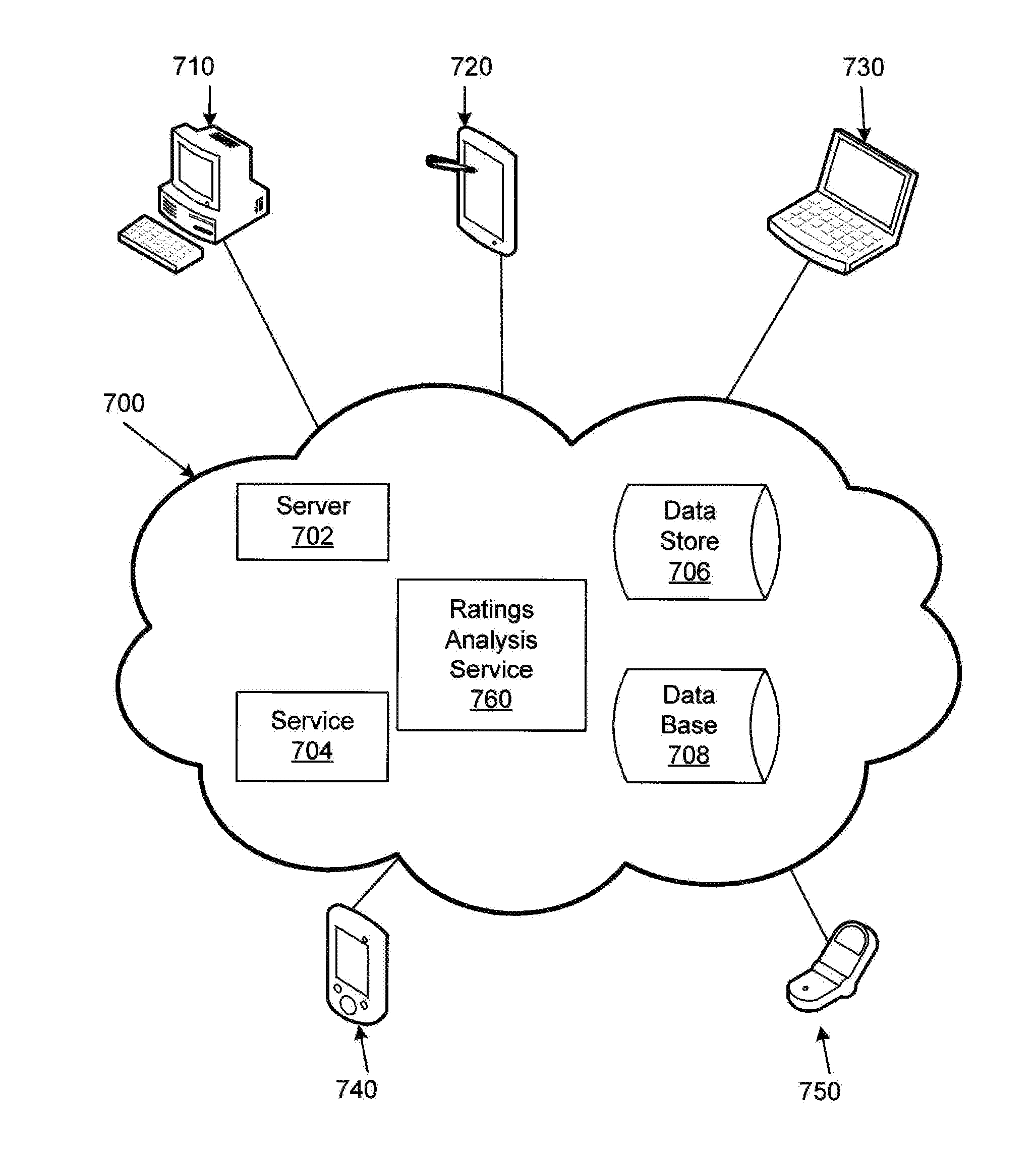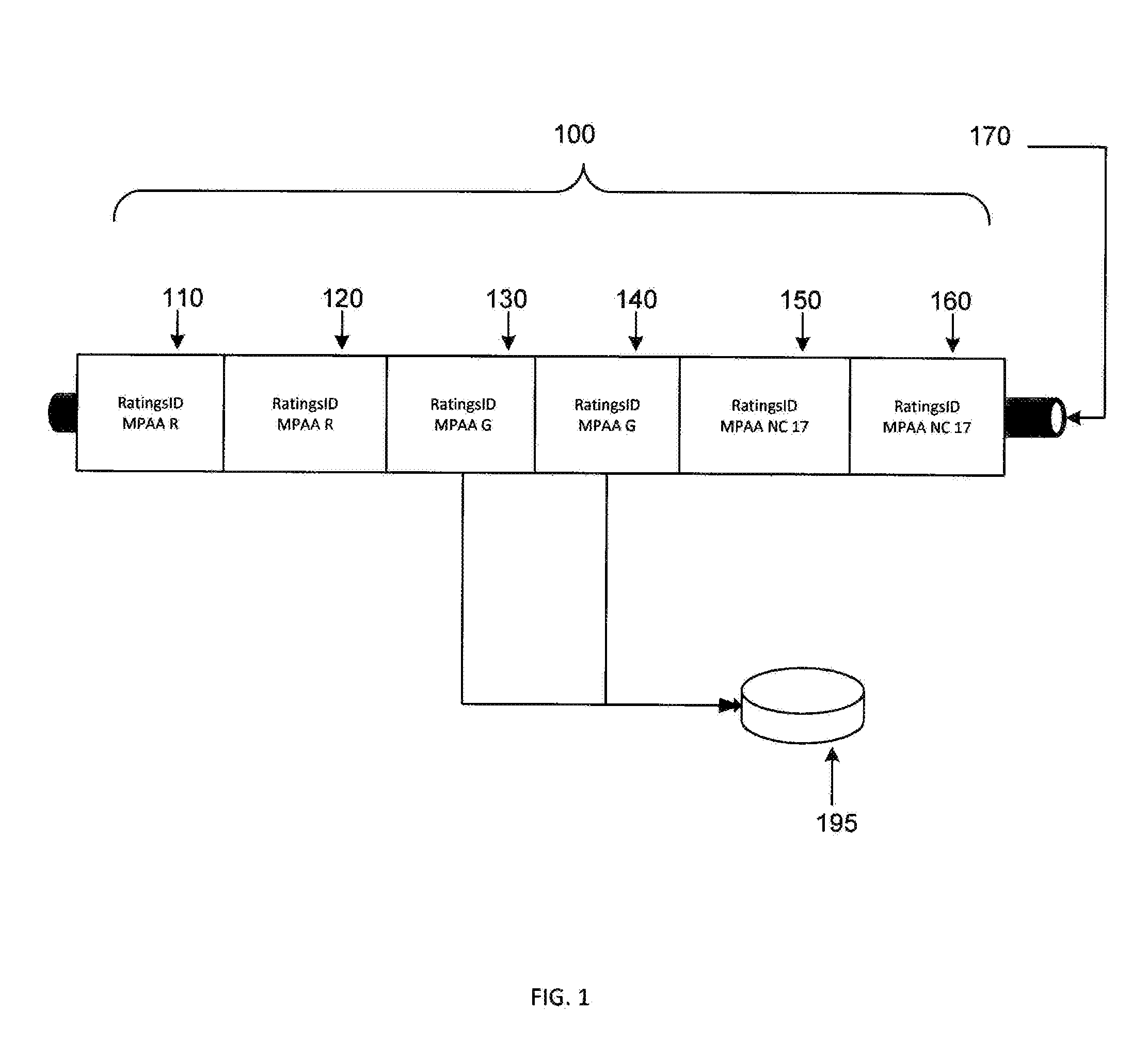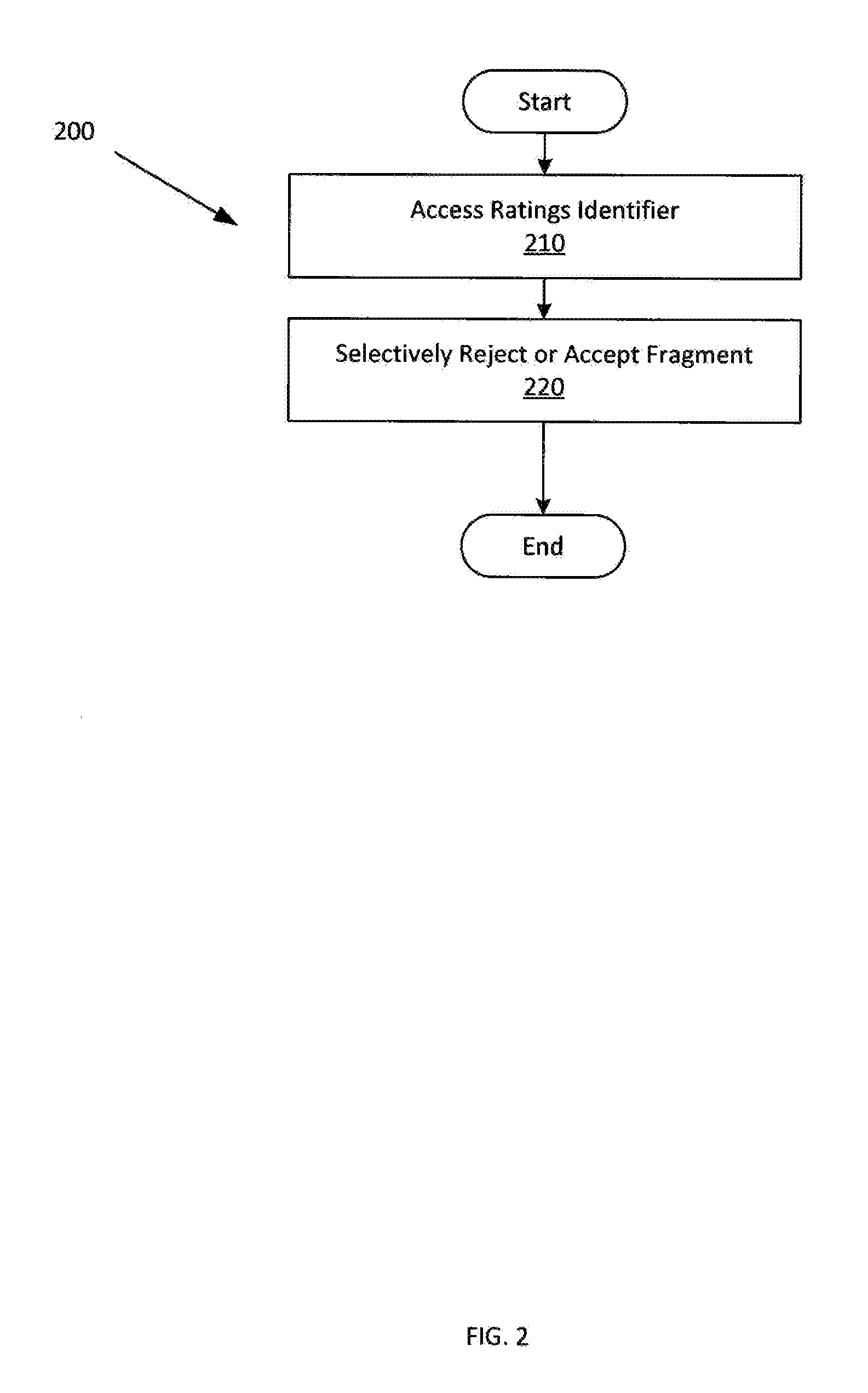Content carried ratings based control
a content and rating technology, applied in the field of content carried ratings based control, can solve the problems of insufficient v-chip based control, user may not have been able to insure that they or their child is safe, and conventional ratings based control may have been too coarsely grained, etc., to facilitate the resolution of time based frustrations
- Summary
- Abstract
- Description
- Claims
- Application Information
AI Technical Summary
Benefits of technology
Problems solved by technology
Method used
Image
Examples
Embodiment Construction
[0018]FIG. 1 illustrates an example stream 100 of fragments. Stream 100 includes fragments 110, 120, 130, 140, 150, and 160. While six fragments are illustrated, a stream may include a much greater number (e.g., hundreds, thousands, tens of thousands) of fragments. Fragments may store, for example, two seconds of video content. In one example, corresponding fragments may include the same content but at different quality levels.
[0019]Stream 100 may be received on, for example, an Ethernet connection 170. While an Ethernet connection 170 is illustrated, stream 100 may be received on other connections. A connection may be configured to present content from a number of sources (e.g., television, FM radio, AM radio, satellite). Different sources may have different bandwidths. While multiple sources may be available, to accommodate bandwidth consumption constraints, Ethernet connection 170 may be configured to receive, at different points in time, content from less than all the available ...
PUM
 Login to View More
Login to View More Abstract
Description
Claims
Application Information
 Login to View More
Login to View More - R&D
- Intellectual Property
- Life Sciences
- Materials
- Tech Scout
- Unparalleled Data Quality
- Higher Quality Content
- 60% Fewer Hallucinations
Browse by: Latest US Patents, China's latest patents, Technical Efficacy Thesaurus, Application Domain, Technology Topic, Popular Technical Reports.
© 2025 PatSnap. All rights reserved.Legal|Privacy policy|Modern Slavery Act Transparency Statement|Sitemap|About US| Contact US: help@patsnap.com



